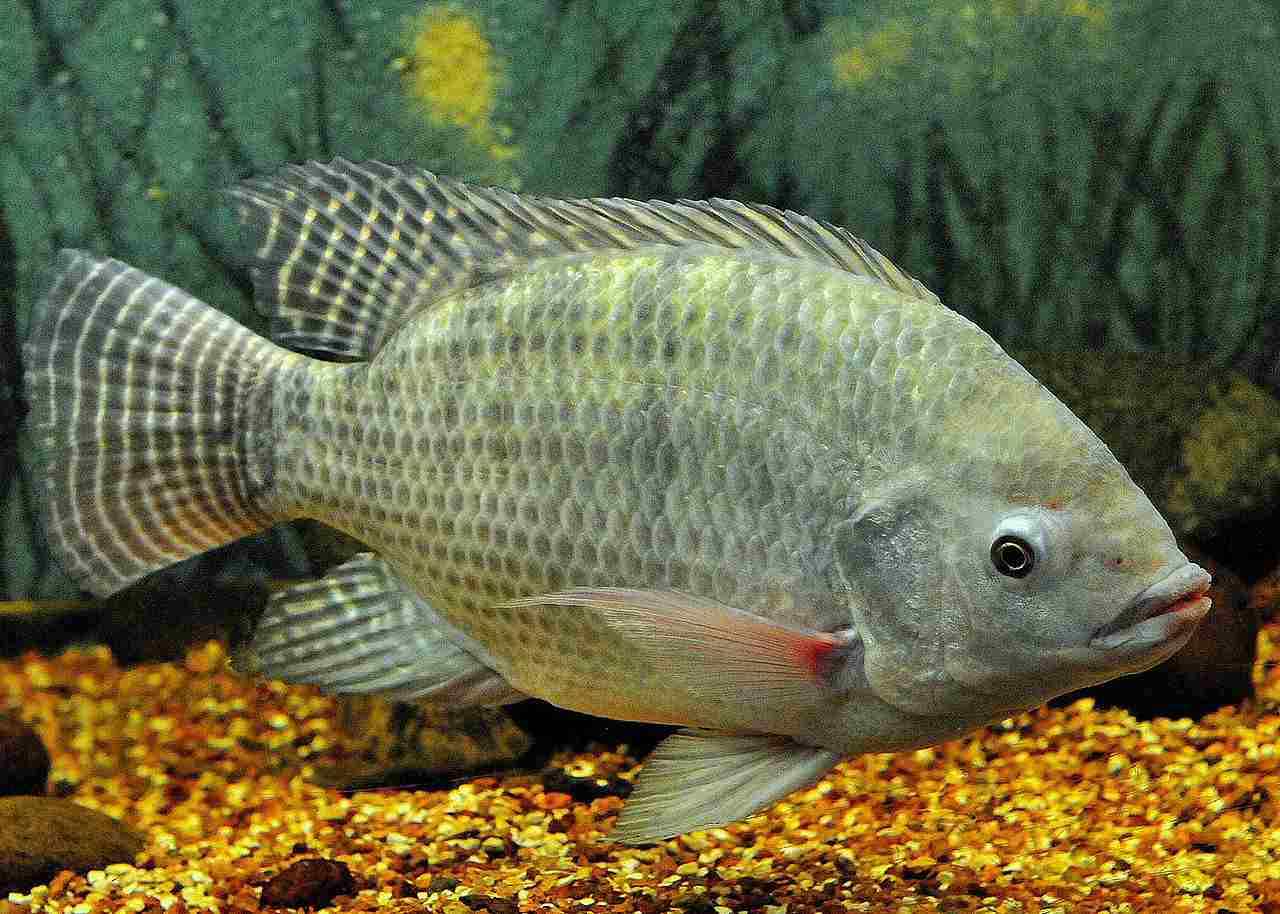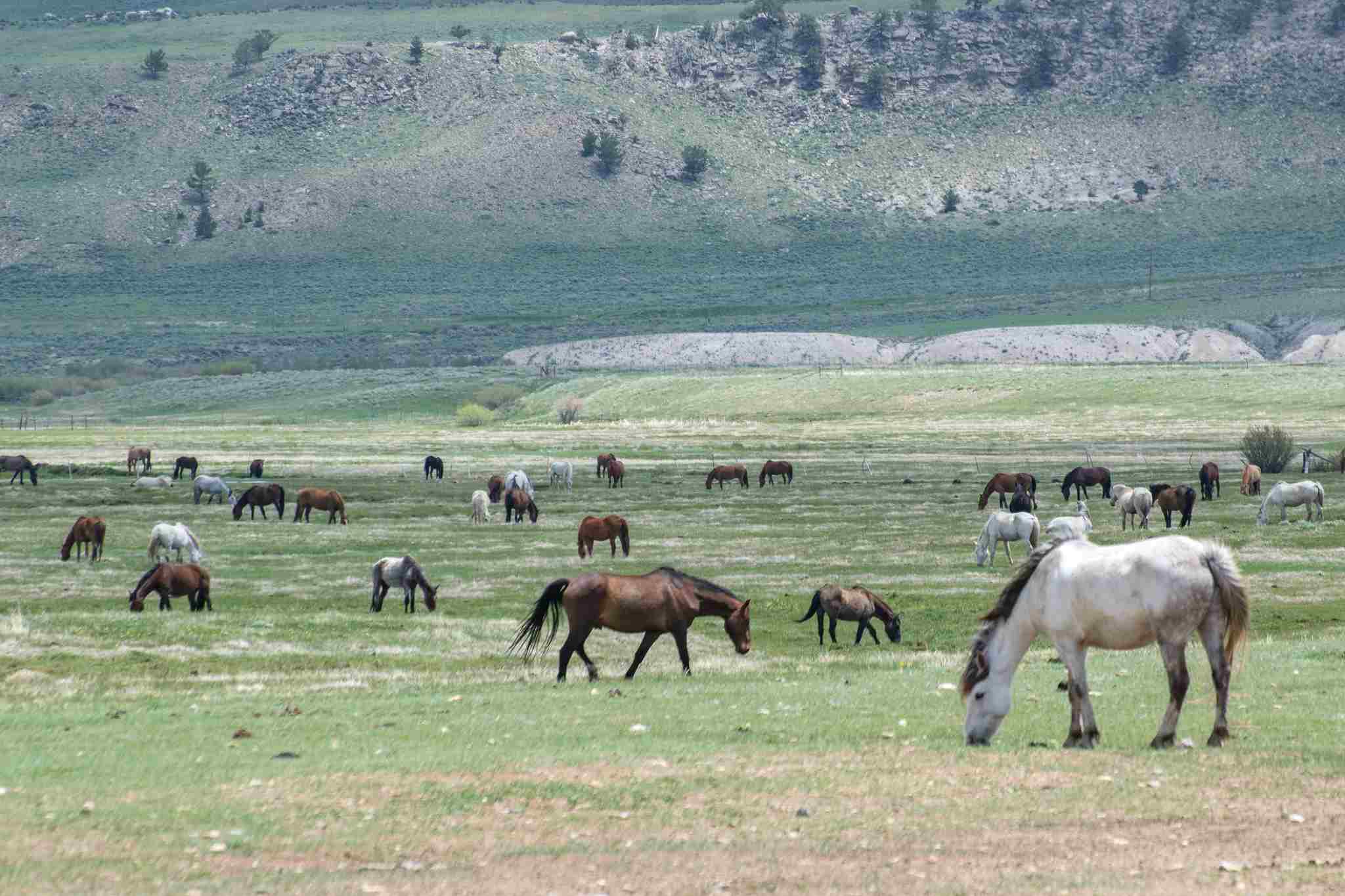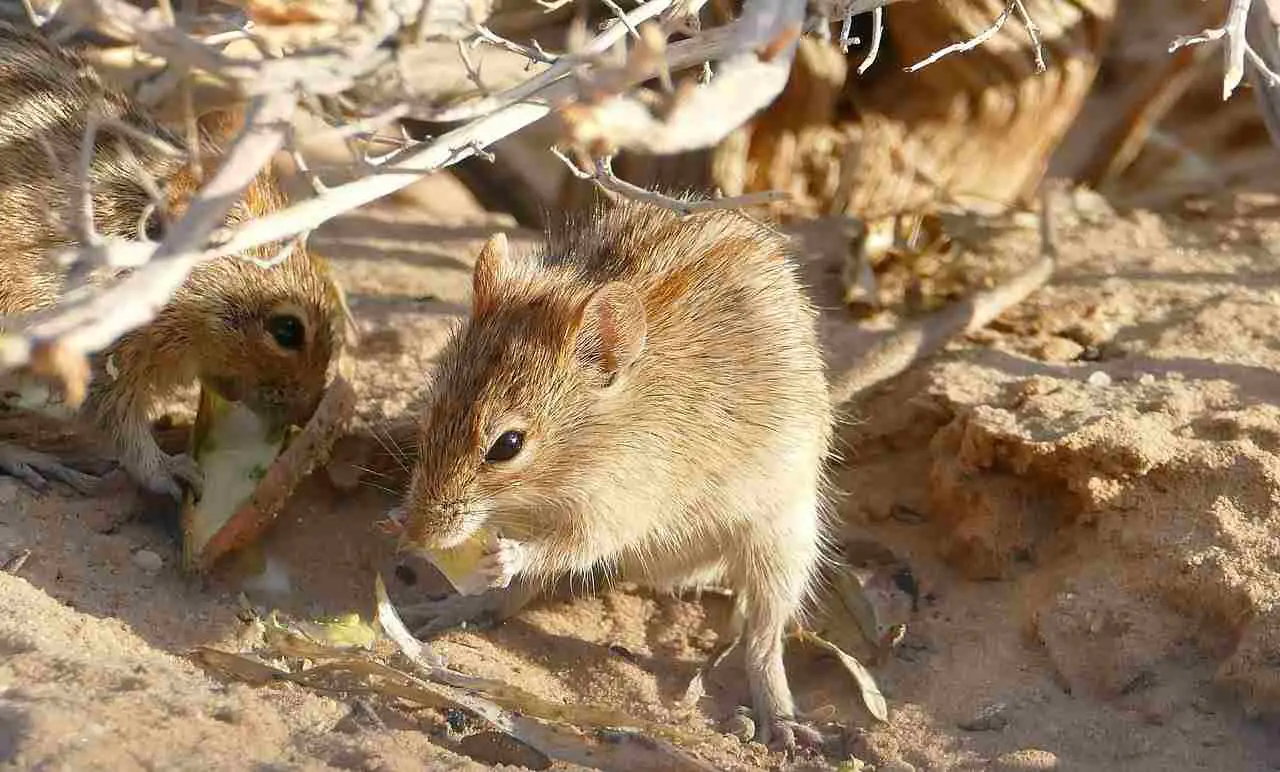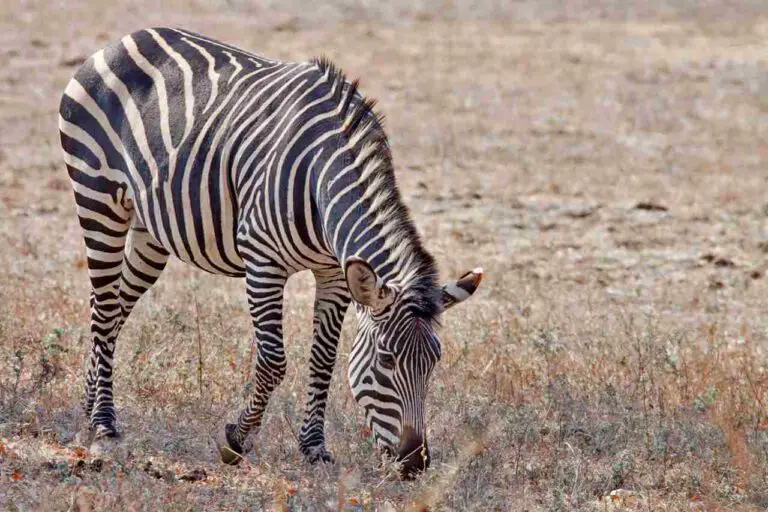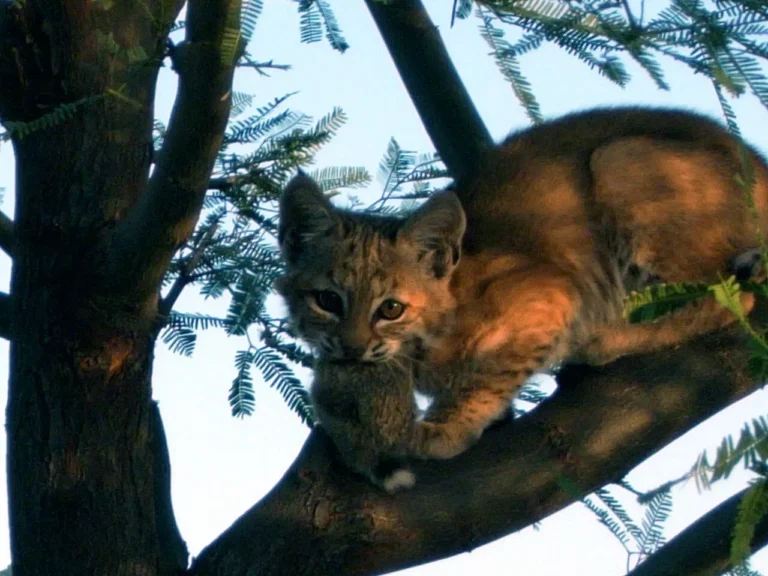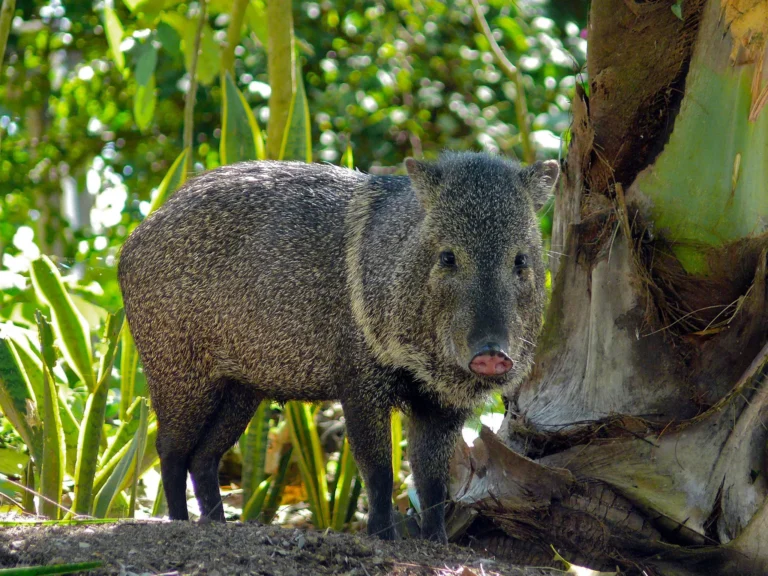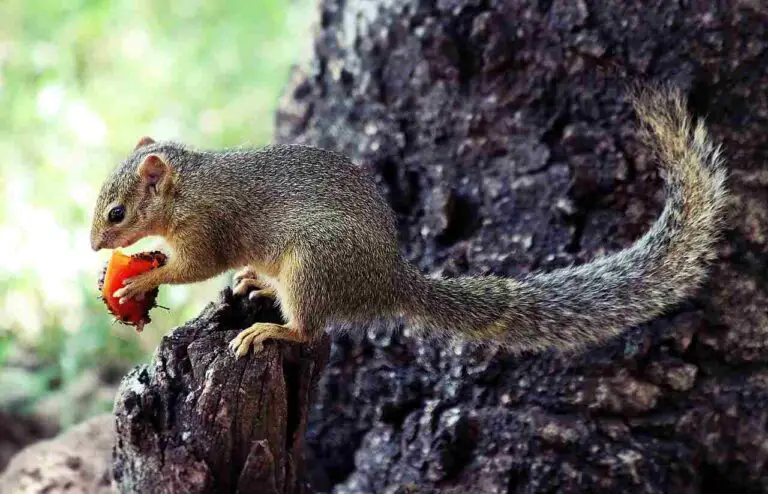What do Hippos Eat in the Wild? Diet of Hippos Discussed
What hippos eat in the wild consists mainly of grasses including short grass, as well as aquatic plants, herbaceous foliage, roots, and fruits. This implies that hippos are mostly herbivorous.
However, in cases where their preferred food sources are not readily available, hippos may eat fish and other animal matter, which means they have omnivorous tendencies.
Below is a discussion of the feeding habits/choices of hippos;
What Hippos Eat in the Wild
1). Red Oat Grass
In the wild, hippos have a diverse diet that consists of various types of vegetation. One of the primary food sources for hippos is Red Oat Grass. This grass provides a significant nutritional source for these magnificent creatures.
Red Oat Grass is a preferred food choice for hippos due to its high nutrient content. It is rich in essential vitamins and minerals that contribute to the overall health and well-being of hippos. This grass is also abundant in fiber, which aids in digestion and helps maintain a healthy gastrointestinal system.
Hippos are known to graze on Red Oat Grass in their natural habitat. They use their powerful jaws and sharp incisors to tear off the grass blades, consuming both the leaves and stems. This grass provides a substantial portion of their daily dietary needs.
Red Oat Grass is not only nutritionally beneficial for hippos but also plays a crucial role in their ecosystem. As hippos graze on this grass, they help control its growth and prevent it from overpopulating certain areas. This, in turn, allows other plant species to thrive and maintain a balanced ecosystem.
It’s important to note that hippos are herbivores, meaning they solely rely on plant-based foods for sustenance. Red Oat Grass is just one of the many types of vegetation that hippos consume in the wild. Their diverse diet ensures they receive a wide range of nutrients necessary for their survival.
2). Buffalo Grass
Buffalo Grass is another important component of a hippo’s diet in the wild. This grass serves as a valuable nutritional source for these magnificent creatures, providing them with essential nutrients to support their overall health and well-being.
Buffalo Grass is rich in vitamins and minerals that are vital for the proper functioning of a hippo’s body. It contains high levels of calcium, which is crucial for maintaining strong bones and teeth. Additionally, this grass is a good source of potassium, which helps regulate fluid balance and supports proper muscle function in hippos.
In their natural habitat, hippos graze on Buffalo Grass, using their powerful jaws and sharp incisors to tear off the grass blades. They consume both the leaves and stems of this grass, ensuring they obtain a substantial portion of their daily dietary requirements.
Apart from its nutritional benefits, Buffalo Grass also plays a significant role in the ecosystem. As hippos graze on this grass, they help control its growth and prevent it from overpopulating certain areas. This allows other plant species to thrive and maintain a balanced ecosystem, benefiting not only hippos but also other animals and plants in the vicinity.
It’s important to note that hippos are herbivores, meaning they rely solely on plant-based foods for sustenance. Buffalo Grass is just one of the many types of vegetation that hippos consume in the wild. Their diverse diet ensures they receive a wide range of nutrients necessary for their survival and contributes to the overall health of their ecosystem.
3). Eelgrass
Eelgrass is a vital component of a hippo’s diet in the wild, providing them with essential nutrients and contributing to their overall health and well-being. This aquatic plant serves as a nutritional source for hippos, ensuring they receive the necessary sustenance to thrive in their natural habitat.
Eelgrass is rich in various nutrients that are crucial for a hippo’s diet. It contains high levels of fiber, which aids in digestion and helps maintain a healthy gastrointestinal system. Additionally, this aquatic plant is a good source of vitamins, including vitamin C and vitamin K, which are essential for immune function and blood clotting, respectively.
In their natural environment, hippos graze on eelgrass, using their powerful jaws and sharp incisors to tear off the plant’s leaves and stems. This allows them to obtain a substantial portion of their daily dietary requirements. The consumption of eelgrass not only provides hippos with the necessary nutrients but also contributes to their hydration, as eelgrass has a high water content.
Furthermore, eelgrass plays a significant role in the ecosystem. As hippos graze on this aquatic plant, they help control its growth and prevent it from overpopulating certain areas. This ensures a balanced aquatic ecosystem, benefiting not only hippos but also other aquatic organisms that rely on eelgrass for food and habitat.
It’s important to note that hippos have adapted to their environment and developed specialized digestive systems to efficiently process the vegetation they consume. Eelgrass, along with other plant-based foods, forms a crucial part of their diet, allowing them to thrive and maintain their population in the wild.
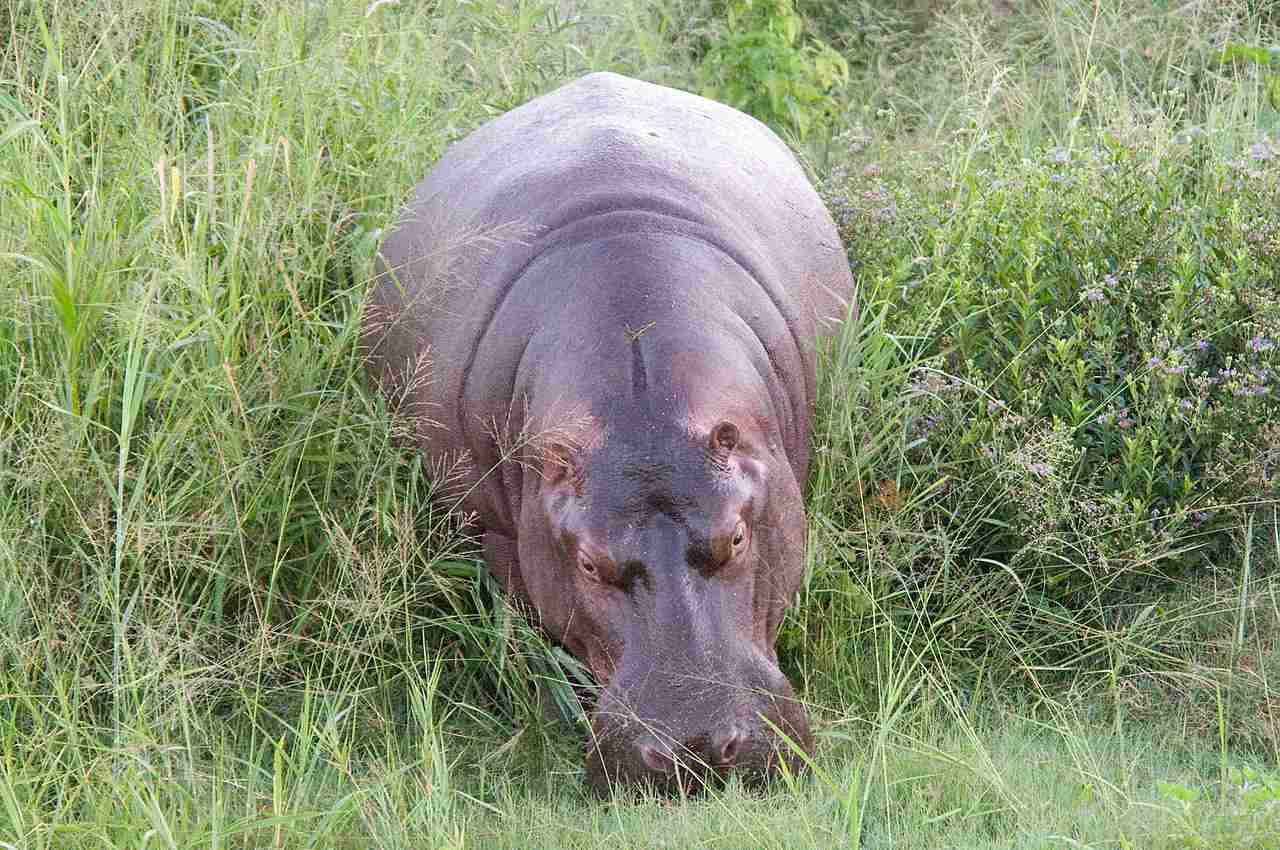
4). Water Hyacinth
Water hyacinth is another important component of a hippo’s diet in the wild, providing them with essential nutrients and contributing to their overall health and well-being. This aquatic plant serves as a nutritional source for hippos, ensuring they receive the necessary sustenance to thrive in their natural habitat.
Water hyacinth is rich in various nutrients that are crucial for a hippo’s diet. It contains high levels of fiber, which aids in digestion and helps maintain a healthy gastrointestinal system. Additionally, this aquatic plant is a good source of vitamins, including vitamin A and vitamin B, which are essential for vision and energy production, respectively.
In their natural environment, hippos graze on water hyacinth, using their powerful jaws and sharp incisors to tear off the plant’s leaves and stems. This allows them to obtain a substantial portion of their daily dietary requirements. The consumption of water hyacinth not only provides hippos with the necessary nutrients but also contributes to their hydration, as water hyacinth has a high water content.
Furthermore, water hyacinth plays a significant role in the ecosystem. As hippos graze on this aquatic plant, they help control its growth and prevent it from overpopulating certain areas. This ensures a balanced aquatic ecosystem, benefiting not only hippos but also other aquatic organisms that rely on water hyacinth for food and habitat.
5). Rigid Hornwort
Rigid hornwort (Ceratophyllum demersum) is a vital component of a hippo’s diet in the wild, providing them with essential nutrients and contributing to their overall health and well-being. This aquatic plant serves as a nutritional source for hippos, ensuring they receive the necessary sustenance to thrive in their natural habitat.
Rigid hornwort is rich in various nutrients that are crucial for a hippo’s diet. It contains high levels of fiber, which aids in digestion and helps maintain a healthy gastrointestinal system. Additionally, this aquatic plant is a good source of vitamins, including vitamin C and vitamin K, which are essential for immune function and blood clotting, respectively.
In their natural environment, hippos graze on rigid hornwort, using their powerful jaws and sharp incisors to tear off the plant’s leaves and stems. This allows them to obtain a substantial portion of their daily dietary requirements. The consumption of rigid hornwort not only provides hippos with the necessary nutrients but also contributes to their hydration, as rigid hornwort has a high water content.
Furthermore, rigid hornwort plays a significant role in the ecosystem. As hippos graze on this aquatic plant, they help control its growth and prevent it from overpopulating certain areas. This ensures a balanced aquatic ecosystem, benefiting not only hippos but also other aquatic organisms that rely on rigid hornwort for food and habitat.
It is important to note that while rigid hornwort is a significant part of a hippo’s diet, it is not the sole source of their nutrition. Hippos have a diverse diet that includes various other aquatic plants, grasses, and fruits. This variety ensures that they receive a balanced and nutritious diet to support their energy needs and overall health.
6). Aquatic Fern
Aquatic ferns, such as the species “filiculoides,” are an important part of a hippo’s diet in the wild. These ferns serve as a nutritional source for hippos, providing them with essential nutrients to support their overall health and well-being.
Aquatic ferns are rich in various nutrients that are crucial for a hippo’s diet. They contain high levels of fiber, which aids in digestion and helps maintain a healthy gastrointestinal system. Additionally, these ferns are a good source of vitamins, including vitamin A and vitamin B, which are important for vision and energy production, respectively.
In their natural habitat, hippos graze on aquatic ferns, using their powerful jaws and sharp incisors to consume the plant. This allows them to obtain a significant portion of their daily dietary requirements. The consumption of aquatic ferns not only provides hippos with the necessary nutrients but also contributes to their hydration, as these ferns have a high water content.
Furthermore, aquatic ferns play a vital role in the ecosystem. As hippos graze on these ferns, they help control their growth and prevent them from overpopulating certain areas. This ensures a balanced aquatic ecosystem, benefiting not only hippos but also other aquatic organisms that rely on aquatic ferns for food and habitat.
7). Fruits and Roots
Fruits and roots are an important part of a hippo’s diet in the wild. These natural food sources provide essential nutrients and contribute to the overall health and well-being of hippos.
Fruits, such as berries and melons, are rich in vitamins and antioxidants, which are beneficial for a hippo’s immune system and overall vitality. These juicy treats also provide hydration, as they have a high water content. Hippos use their powerful jaws to crush the fruits and extract the nutritious pulp.
Roots, on the other hand, offer a source of carbohydrates and fiber. Hippos dig into the soil with their strong teeth and tusks to unearth roots, which they then consume. These roots provide energy and aid in digestion, ensuring a healthy gastrointestinal system for the hippos.
In addition to their nutritional benefits, fruits and roots play a crucial role in the ecosystem. Hippos disperse seeds through their feces, helping to propagate plant species and maintain biodiversity. This symbiotic relationship between hippos and plants ensures the survival and growth of various flora in their habitat.
It is important to note that hippos have specific preferences when it comes to fruits and roots. They tend to favor certain species that are readily available in their environment. For example, hippos may consume the fruits of the “genus species” tree, which provides them with a rich source of nutrients.
What Hippos Eat in Captivity
In captivity, hippos feed on watermelon, pumpkin, grass (including Bermuda grass), legumes (including alfalfa), bananas, lettuce, and herbivore pellets, among others. Below is a brief discussion of each;
1). Watermelon (Do Hippos Eat Watermelon?)
Hippos in captivity have a varied diet that includes watermelon. Watermelon is a favorite treat for hippos due to its high water content, which helps to keep them hydrated. It is also a good source of vitamins A and C, as well as potassium. Hippos enjoy the sweet and juicy flesh of watermelon, and it provides them with a refreshing and nutritious snack. In addition to watermelon, hippos in captivity are also fed a variety of other fruits and vegetables to ensure they receive a balanced diet.
These include pumpkins, bananas, lettuce, and herbivore pellets. The diet of captive hippos is carefully monitored and controlled to ensure they receive all the necessary nutrients for their health and well-being. While watermelon is a popular choice for feeding hippos in captivity, it is important to note that their diet in the wild consists mainly of grasses and aquatic plants.
2). Pumpkins (Can Hippos Eat Pumpkins?)
Pumpkins are a popular food choice for hippos in captivity. They are not only delicious but also provide essential nutrients for their health. Hippos can eat pumpkins, as they are herbivores and rely on a plant-based diet. Pumpkins are rich in vitamins A and C, as well as fiber, which aids in digestion. The high water content in pumpkins also helps to keep hippos hydrated.
In captivity, pumpkins are often fed to hippos as a treat or as part of a balanced diet that includes other fruits and vegetables. However, it’s important to note that in the wild, hippos primarily consume grasses and aquatic plants. Pumpkins are not a natural part of their diet in their natural habitat. Nonetheless, in captivity, hippos can safely enjoy the occasional pumpkin snack, providing them with both nutrition and enrichment.
3). Grass (Do Hippos Eat Grass?)
Hippos are known for their voracious appetite, but do they eat grass? The answer is yes, hippos do eat grass, both in the wild and in captivity. One type of grass that hippos consume is Bermuda grass. This type of grass is commonly found in their natural habitat and is also used to make Bermuda hay, which is often fed to hippos in captivity.
Grass is an important part of a hippo’s diet as it provides essential nutrients and fiber. It helps to keep their digestive system healthy and aids in their overall digestion. In the wild, hippos graze on various types of grasses that grow near water sources. They use their large mouths to gather and consume large quantities of grass in a single feeding session.
In captivity, hippos are provided with a balanced diet that includes grass as well as other fruits and vegetables. The grass is usually cut into smaller pieces to make it easier for the hippos to eat. It is important to note that while grass is a significant part of a hippo’s diet, it is not the only food they consume. They also eat a variety of other plants and fruits to meet their nutritional needs.
4). Legumes
Legumes, such as alfalfa, are another type of food that hippos eat in captivity. These legumes provide a good source of protein and other essential nutrients for the hippos’ diet. In captivity, hippos are often fed a balanced diet that includes a variety of legumes along with other fruits and vegetables.
Alfalfa, in particular, is a popular choice because it is rich in vitamins and minerals that are beneficial for the hippos’ overall health. It is usually fed to them in the form of hay or pellets. The high fiber content in legumes helps to maintain a healthy digestive system for the hippos, preventing any digestive issues.
In addition to alfalfa, other legumes like soybeans and lentils may also be included in the hippos’ diet. These legumes provide a diverse range of nutrients and help to ensure that the hippos receive a well-rounded diet.
Overall, legumes play an important role in the captive hippo’s diet, providing them with the necessary nutrients to thrive in their environment.
5). Bananas (Do Hippos Eat Bananas?)
Bananas are a popular fruit that hippos eat in captivity. They are a good source of vitamins and minerals, providing essential nutrients for the hippos’ diet. Bananas are often included in the daily feeding routine of captive hippos, along with other fruits and vegetables.
The high water content in bananas helps to keep the hippos hydrated, especially during hot weather. The natural sugars in bananas provide a quick source of energy for the hippos, helping them to stay active and healthy.
In addition to being nutritious, bananas are also easy for hippos to eat. Their soft texture and sweet taste make them a favorite among these animals. Hippos can easily peel and consume bananas, making them a convenient and enjoyable part of their diet.
However, it’s important to note that bananas should be given in moderation to hippos. While they are a healthy treat, excessive consumption of bananas can lead to digestive issues for these animals. Therefore, it’s crucial for caretakers to provide a balanced diet that includes a variety of foods to ensure the overall health and well-being of captive hippos.
6). Lettuce
Lettuce is another vegetable that hippos eat in captivity. It is a leafy green that provides essential nutrients and hydration for these animals. Lettuce is often included in the diet of captive hippos due to its high water content, which helps to keep them hydrated and healthy.
One of the benefits of feeding hippos lettuce is its low calorie content. This makes it a suitable option for hippos that need to maintain a healthy weight. Lettuce also contains vitamins and minerals that contribute to the overall well-being of these animals.
In addition to its nutritional value, lettuce is easy for hippos to consume. Its crisp texture and mild taste make it a palatable choice for these herbivores. Hippos can easily chew and digest lettuce, making it a convenient and enjoyable part of their daily meals.
However, it’s important to note that lettuce should be given in moderation to hippos. While it is a healthy addition to their diet, excessive consumption of lettuce can lead to digestive issues. Therefore, caretakers should provide a balanced diet that includes a variety of foods to ensure the optimal health of captive hippos.
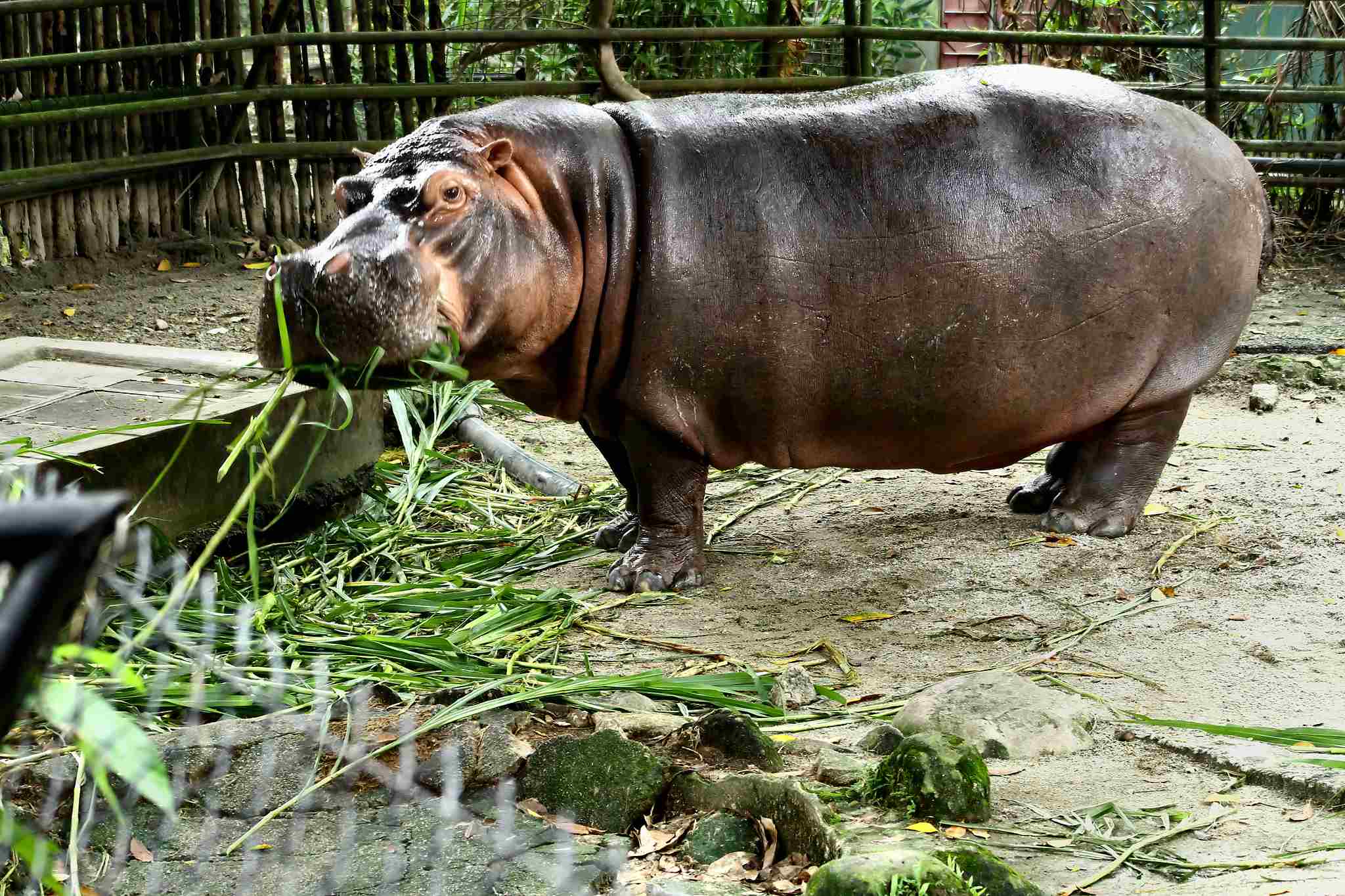
7). Herbivore Pellets
In addition to their natural diet, hippos in captivity are often fed herbivore pellets. These specially formulated pellets are designed to provide the necessary nutrients and vitamins that hippos need to thrive. Herbivore pellets are made from a combination of grains, vegetables, and other plant-based ingredients, ensuring a balanced diet for captive hippos.
One of the advantages of feeding hippos herbivore pellets is that they are easy to store and distribute. These pellets have a long shelf life and can be conveniently portioned out to meet the dietary needs of each individual hippo. They also help to supplement the natural diet of hippos, ensuring that they receive all the essential nutrients they require.
Herbivore pellets are also beneficial for caretakers as they allow for better monitoring of the hippos’ food intake. By providing measured portions of pellets, caretakers can ensure that each hippo is receiving the appropriate amount of food. This helps to prevent overfeeding or underfeeding, promoting the overall health and well-being of the hippos in captivity.
While herbivore pellets are a valuable addition to the diet of captive hippos, it’s important to note that they should not be the sole source of nutrition. These pellets should be supplemented with a variety of other foods, such as fruits, vegetables, and grass, to mimic the diversity of their natural diet.
Additional Questions
*Do Hippos Eat Fish?
While hippos are primarily herbivores, there have been rare instances where they have been observed eating freshwater fish, particularly certain catfish species. However, it is important to note that this behavior is not typical for hippos, as they are obligate herbivores.
These occasions of fish consumption by hippos are usually attributed to specific conditions such as scarcity of preferred food sources, anomalous behavior development, or local overpopulation of fish. Overall, fish is not a regular part of a hippo’s diet.
Conditions Under Which Hippos May Eat Fish
1). Scarcity of Preferred Food Sources
When plant food is not available in sufficient quantities, hippos may resort to eating fish. This scarcity of preferred food sources can drive hippos to adapt their diet and consume fish as an alternative source of nutrition. While hippos are primarily herbivores, their opportunistic nature allows them to take advantage of available food sources when necessary.
This behavior is a result of sudden environmental changes or ecological instability that disrupts the availability of their preferred plant-based diet. In such situations, hippos may exhibit a temporary shift in their feeding habits and consume fish to meet their nutritional needs. This adaptation highlights the flexibility and resourcefulness of hippos in response to changing circumstances. However, it is important to note that this behavior is not a regular part of their diet and is only observed under specific conditions of food scarcity.
2). Anomalous Behavior Development
In addition to resorting to fish consumption, hippos may also exhibit opportunistic habits, including cannibalism. This anomalous behavior development is often driven by sudden environmental changes and ecological instability, which disrupt the availability of their preferred plant-based diet. When faced with limited food sources, hippos may turn to cannibalism as a means to meet their nutritional needs.
While this behavior is not a regular part of their diet, it highlights the adaptability and resourcefulness of hippos in response to challenging circumstances. It is important to note that cannibalism is observed only under specific conditions and is not a common occurrence in the natural feeding habits of hippos.
3). Local Overpopulation of Fish
When there is a local overpopulation of fish in the habitat of hippos, it can lead to a change in their diet. In such situations, some hippos may be forced to exploit fish as a food source. This is not a common occurrence, but when the preferred plant-based food sources are scarce, hippos may resort to eating fish to meet their nutritional needs. The local overpopulation of fish can disrupt the ecological balance and availability of their usual food sources, prompting hippos to adapt their diet. However, it is important to note that fish consumption is not a regular part of their feeding habits and is only observed under specific conditions.
*Do Hippos Eat Crocodiles?
While hippos and crocodiles may come into conflict with each other, hippos do not typically eat crocodiles as part of their diet. The relationship between these two apex predators is complex and often involves territorial disputes and occasional aggression. However, it is important to note that crocodiles are not a natural food source for hippos.
In some instances, crocodiles may actively prey on vulnerable hippos, such as calves, injured individuals, or older and sick hippos. These situations can lead to conflicts between the two species, as hippos try to protect themselves and their young from crocodile attacks. However, it is not common for hippos to actively hunt and consume crocodiles as a regular part of their feeding habits.
The diet of hippos primarily consists of plant-based food sources, such as grasses, aquatic plants, and fruits. They are herbivores and rely on these vegetation sources to meet their nutritional needs. While hippos are known to be territorial and can display aggressive behavior towards other animals, including crocodiles, their main focus is on defending their territory rather than actively hunting and consuming crocodiles.
Crocodiles, on the other hand, are carnivorous reptiles that primarily feed on fish, birds, and other small animals. They have a different set of adaptations and hunting strategies compared to hippos. Crocodiles are more likely to prey on vulnerable hippos, especially when they are young or weakened.
*Do Hippos Eat Zebras?
While it is not common for hippos to eat zebras, there have been rare instances where hippos have been observed preying on zebras. This behavior is not considered natural for hippos, as their diet primarily consists of plant-based food sources. However, hippos are known to be adaptable and can exhibit predatory behavior towards other large animals, such as kudu, wildebeest, and impala.
Hippos may ambush zebras and other large animals when they are crossing or drinking close to an aquatic ecosystem, such as a watering hole. In these situations, the proximity to water provides an advantage for hippos, as they are powerful swimmers and can easily overpower their prey. This behavior demonstrates the versatility of hippos and their ability to act as predators when the opportunity arises.
It is important to note that crocodiles are more likely to exhibit this type of predatory behavior towards zebras and other large animals. Crocodiles are carnivorous reptiles and have adaptations and hunting strategies that make them more efficient predators. They are known to actively prey on zebras and other herbivores that come near the water, using their stealth and powerful jaws to capture their prey.
While hippos may occasionally prey on zebras, it is not a regular part of their feeding habits. Their main diet consists of grasses, aquatic plants, and fruits. Hippos are herbivores and rely on these vegetation sources to meet their nutritional needs. Their size and territorial nature are more focused on defending their territory rather than actively hunting and consuming zebras.
*Do Hippos Eat Other Hippos?
While it is not common for hippos to eat other hippos, there have been rare instances where this behavior has been observed. Cannibalism among hippos is considered to be extremely rare and not a normal or average behavior. However, there are certain circumstances that may lead to hippos consuming other hippos, particularly carcasses or young individuals.
Impaired hippos, such as those that are injured, sick, or old, are more vulnerable and at risk of being cannibalized by other hippos. In these cases, the weakened state of the individual may make them an easier target for other hippos looking for a source of food. It is important to note that this behavior is not a regular part of the hippo’s diet or feeding habits.
The occurrence of cannibalism among hippos may be caused by a combination of factors. Scarcity of preferred food sources, such as grasses and aquatic plants, can lead to increased competition for resources and may drive hippos to resort to cannibalism as a means of survival. Additionally, territorial disputes and aggression within hippo populations can also contribute to instances of cannibalism.
It is worth mentioning that hippos are herbivores and their main diet consists of plant-based food sources. They primarily feed on grasses, aquatic plants, and fruits to meet their nutritional needs. Their large size and territorial nature are more focused on defending their territory and maintaining dominance within their social hierarchy, rather than actively hunting and consuming other hippos.
*Do Hippos Eat Birds?
Generally, hippos do not eat birds as part of their regular diet. Instead, they have a symbiotic relationship with certain bird species such as the oxpecker, cattle egret, Egyptian goose, and cormorant. These birds often perch on the backs of hippos, feeding on parasites and insects that inhabit their skin. This mutually beneficial relationship helps to keep the hippos clean and free from pests, while the birds have a source of food.
However, it is important to note that hippos are opportunistic feeders and have been known to consume birds on rare occasions. This behavior is not a common occurrence and is typically driven by specific circumstances, such as scarcity of their preferred food sources or an abnormal behavior development.
Hippos primarily rely on a herbivorous diet, consisting of grasses, aquatic plants, and fruits. Their large size and territorial nature are more focused on defending their territory and maintaining dominance within their social hierarchy, rather than actively hunting and consuming birds.
*Do Hippos Eat Turtles?
Hippos do not generally eat turtles as part of their regular diet. Instead, there is a unique symbiotic relationship between hippos and terrapin turtles. These turtles often climb onto the backs of hippos to sunbathe, taking advantage of the warm surface. This mutually beneficial arrangement allows the turtles to regulate their body temperature while the hippos remain unaffected.
While it is extremely rare, there have been a few documented cases of hippos exhibiting anomalous behavior and consuming turtles. However, this behavior is not a common occurrence and is not a significant part of their diet.
It is important to note that hippos are primarily herbivorous animals, relying on a diet of grasses, aquatic plants, and fruits. Their large size and territorial nature are more focused on defending their territory and maintaining dominance within their social hierarchy, rather than actively hunting and consuming turtles.
*Do Hippos Eat Deer?
Hippos are not known to eat deer, mainly because deer are not common in their geographic location or habitat. Instead, hippos prefer to eat other ungulates like antelopes, including impala and wildebeest. However, it is important to note that hippos are primarily herbivorous animals. While they may eat deer if they are available, it is not a significant part of their diet.
Hippos have a diverse diet that consists mainly of grasses, aquatic plants, and fruits. They are well-adapted to their herbivorous lifestyle, with large jaws and teeth designed for grinding plant material. Their size and territorial nature are more focused on defending their territory and maintaining dominance within their social hierarchy, rather than actively hunting and consuming deer.
*Do Hippos Eat Meat?
Hippos are primarily herbivorous animals, but they are known to supplement their plant-based diet with meat. While it is not a significant part of their diet, hippos have been observed consuming carcasses, ungulate prey, fish, aquatic reptiles, and other smaller animals.
This behavior is more likely to occur in certain conditions, such as scarcity of preferred food sources, anomalous behavior development, or local overpopulation of fish. However, it is important to note that meat consumption is not a regular or essential part of a hippo’s diet. Their main focus remains on consuming grasses, aquatic plants, and fruits.
*What Kind of Meat do Hippos Eat?
Hippos, primarily herbivorous animals, have been observed supplementing their plant-based diet with various types of meat. When it comes to meat consumption, hippos have been known to eat carcasses, ungulate prey, fish, aquatic reptiles, and other smaller animals. However, it is important to note that this behavior is not a regular or essential part of their diet.
In certain conditions, hippos may exhibit a preference for meat. For example, when there is a scarcity of their preferred food sources, hippos may turn to meat as an alternative source of nutrition. Additionally, anomalous behavior development can lead to hippos consuming meat. This behavior is more likely to occur when there is a local overpopulation of fish, which may drive hippos to include meat in their diet.
While hippos do consume meat on occasion, it is not their primary source of sustenance. Their main focus remains on consuming grasses, aquatic plants, and fruits. Meat consumption is more of a supplementary behavior that is influenced by specific circumstances rather than a regular dietary requirement for hippos.
*Do Hippos Eat Their Young?
While hippos have been observed killing their young, they do not eat them. This behavior is considered very rare and only occurs as a result of anomalous behavioral adaptation. Hippos primarily have a herbivorous diet and their main focus is on consuming grasses, aquatic plants, and fruits. The killing of young hippos is not a regular or essential part of their behavior.
It is important to note that this behavior should not be generalized as it is an abnormal occurrence. Hippos typically do not include their young in their diet and their main source of sustenance remains plant-based.
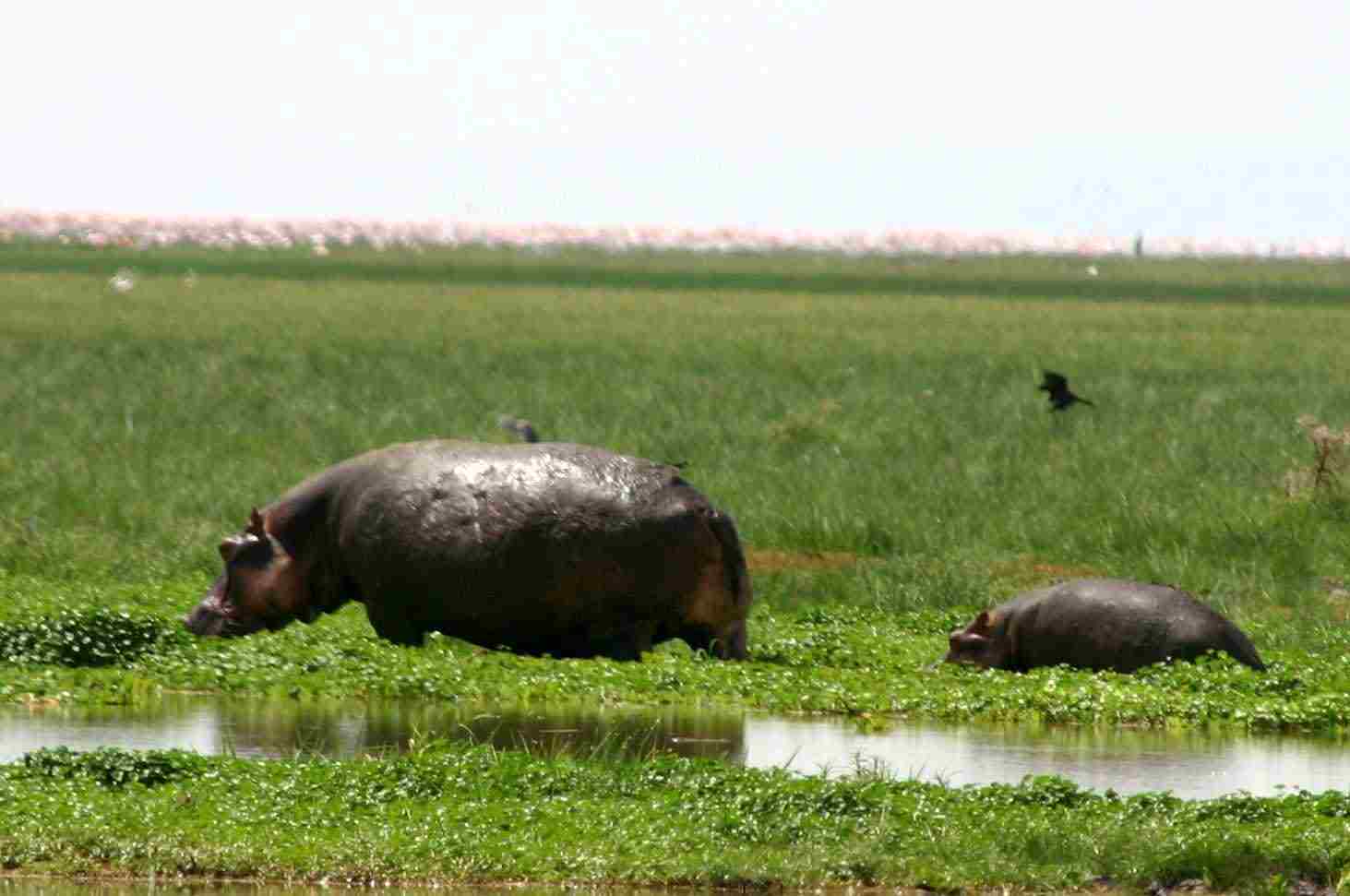
*Why Do Hippos Eat Their Babies?
The act of hippos eating their babies is not a common occurrence and is considered abnormal and rare. However, there are a few reasons why this behavior may happen. One of the main reasons is acute food scarcity. When there is a lack of available food sources, hippos may resort to eating their young as a means of survival. This extreme behavior is a result of the desperate need for sustenance.
Another reason for hippos eating their babies is anomalous behavioral adaptation. In certain cases, hippos may exhibit abnormal behavior due to various factors such as stress, illness, or environmental changes. This can lead to the killing and consumption of their own offspring.
It is important to note that these instances are not representative of the typical behavior of hippos. Hippos are primarily herbivorous animals, and their main diet consists of grasses, aquatic plants, and fruits. The act of eating their babies is an extreme and rare occurrence that should not be generalized.
*Do Hippos Eat Plants?
Hippos are primarily herbivorous animals and their main source of food comes from plants. They have a diverse diet that includes various types of plants such as grasses, aquatic plants, and wetland herbs. Hippos also consume vegetables, fruits, grains, and roots, all of which are derived from plants. Their diet consists mainly of plant material, and they have adapted to efficiently extract nutrients from these sources.
Grasses are a significant part of a hippo’s diet, as they provide a good source of nutrition. Aquatic plants, such as water hyacinth and rigid hornwort, are also consumed by hippos. These plants are found in their natural habitat and provide additional sustenance for these animals. Hippos also eat fruits and roots, which add variety to their diet and provide essential nutrients.
It is important to note that hippos do not consume meat as part of their regular diet. They are strictly herbivorous and rely solely on plant-based food sources for their nutrition. This distinguishes them from other carnivorous or omnivorous animals. Hippos have evolved to efficiently digest and extract nutrients from plant material, allowing them to thrive in their natural habitat.
*How Much do Hippos Eat a Day?
On average, hippos consume approximately 19 kg (41.88 pounds) of food per day, which is about 1.25 percent of their body weight. This estimate is based on a range of 1.0 to 1.5 percent, taking into account the average weight of both male and female hippos, which is around 1525 kilograms.
It’s important to note that these figures are holistic averages, and some studies may estimate significantly higher or lower values. For example, there are reports of hippos consuming over 80 pounds of food in a single day. However, the range provided here gives a general idea of the daily food intake for hippos.
Several factors influence how much hippos eat in a day. One of the main factors is the species of hippo. There are two species of hippos: the common hippo and the pygmy hippo. The common hippo is larger and generally consumes more food compared to the pygmy hippo.
Age and size also play a role in determining the amount of food a hippo consumes. Younger hippos and smaller individuals may eat less compared to fully grown adults. As hippos grow and develop, their appetite increases to support their growing bodies.
The availability of food is another crucial factor. Hippos are grazers and spend a significant amount of time feeding on grasses and other vegetation. If their preferred food sources are scarce, hippos may need to consume larger quantities to meet their nutritional needs.
Hippos have a substantial appetite and consume a significant amount of food each day. On average, they eat around 19 kg (41.88 pounds) or 1.25 percent of their body weight. However, the actual amount can vary depending on factors such as species, age, size, and the availability of food. Understanding the dietary habits of hippos helps us appreciate their unique adaptations and their role in their natural habitats.
Conclusion
*In the wild, hippos primarily feed on a variety of aquatic plants and grasses. Some of the main food sources for hippos include red oat grass, buffalo grass, eelgrass, water hyacinth, rigid hornwort, and aquatic fern.
These plants provide the necessary nutrients and energy for hippos to thrive in their natural habitats. Additionally, hippos also consume fruits and roots when available.
* In captivity, hippos have a slightly different diet compared to their wild counterparts. While they still consume grass, they are also provided with a range of other foods to ensure a balanced diet.
Watermelon is a popular choice for hippos in captivity, as it provides hydration and essential vitamins. Pumpkins are another favorite, as they are rich in fiber and help maintain healthy digestion. Grass, legumes, bananas, lettuce, and herbivore pellets are also included in their diet to meet their nutritional needs.

